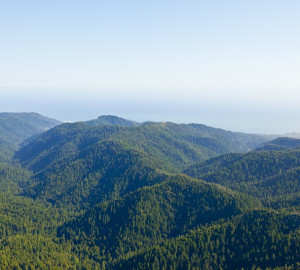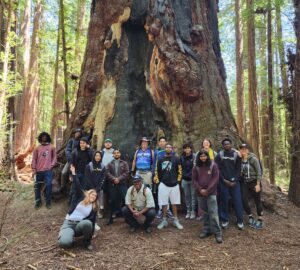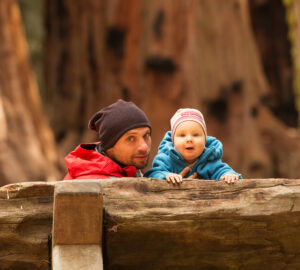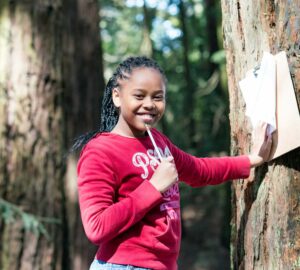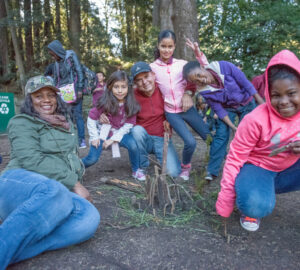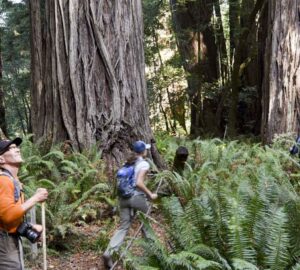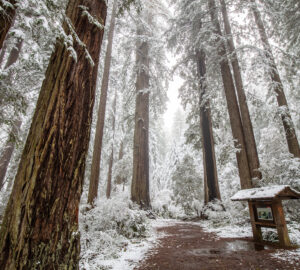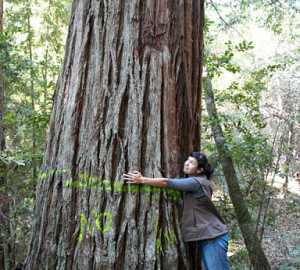While many people were searching for brightly colored eggs this past Sunday, I spent my Easter hiking in the forest looking for trillium and rhododendron flowers. As I walked along the Lady Bird Johnson Trail in Redwood National Park, I started to look at the forest with new eyes.
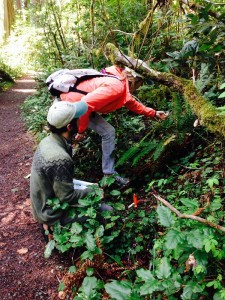
I accompanied two Humboldt State University (HSU) interns, Shawna and Jake, while they did their weekly plant monitoring. Their internship program is a partnership between HSU and Redwood National Park which the League helps fund. This semester-long course gives the students an opportunity to help with natural resource monitoring and to gain experience and knowledge working for the National Park Service. The students can choose to work on fire management, rare and invasive plant surveys, or a phenology project, and they work closely with park staff to complete 90 hours of work in the field.
On this sunny Sunday morning, Shawna, Jake and I were looking for signs of a forest in bloom. They were recording data on whether trillium plants had flowers or fruits, or were blooming at all. They did the same for rhododendron plants. After just a few minutes in the forest with these two, I realized I was looking at the forest in a totally different way. Now, I stopped to examine every trillium and rhododendron plant we passed, trying to determine what stage of reproduction it was in. I was looking more closely at the other plants in the forest, too, to see if they were blooming yet. I had the eyes of a scientist, not just of a hiker – and I liked it!
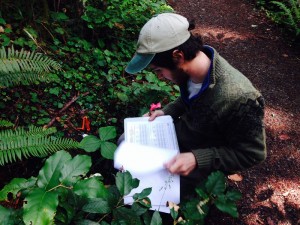
During those two hours in the forest with the HSU students I was reminded how fun it is to look at the forest like a biologist. It brought me back to my field days in college, when I would stop to try and identify every plant. I had a great time looking for evidence of wildlife and the signs of the forest telling me its story. And the best part was sharing this with two new biologists who were just starting out on an exciting journey of knowledge and discovery.
To learn more about the amazing education programs we support, visit our education grants program website.

